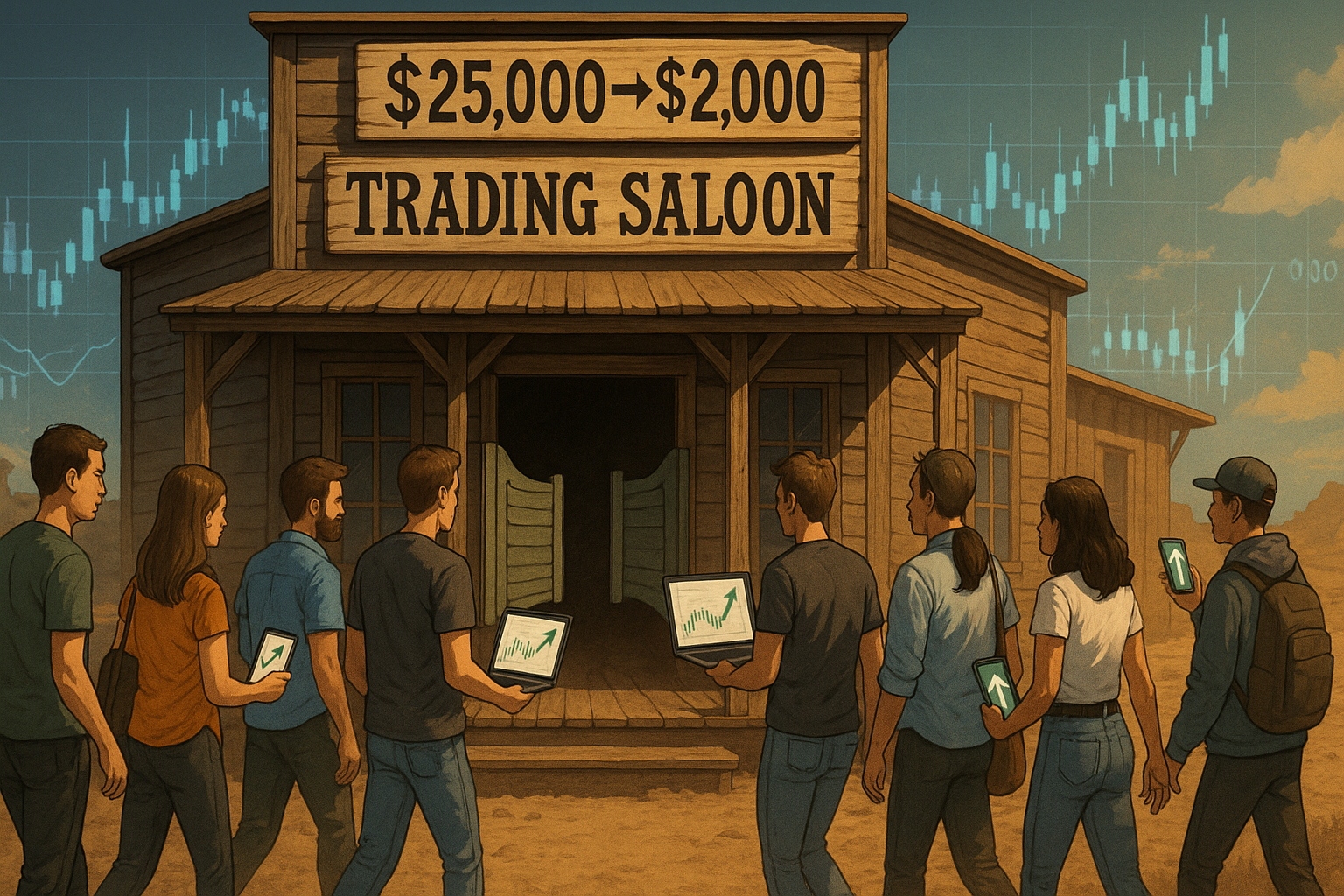The suits at the Financial Industry Regulatory Authority are finally loosening their ties. After years of keeping the average Joe and Jane out of the day trading pool, Finra has decided to drastically cut the pattern day trader threshold from $25,000 to a mere $2,000.
That sound you hear? Thousands of Reddit users cracking open their digital piggy banks.
For those who've never slammed into this particular regulatory wall, the pattern day trader rule has been the bane of small-time traders since the early 2000s. Make more than three round-trip trades in five business days with less than $25k in your account, and boom—your broker puts you in time-out. The rule emerged from the smoking ruins of the dot-com bubble, when countless amateur traders discovered that day trading wasn't quite the get-rich-quick scheme the late-night infomercials promised.
I've followed retail trading regulations since before Robinhood made confetti explosions a trading feature, and this shift represents something significant. The $25k threshold has always been weirdly arbitrary—a number big enough to hurt but not so massive that the truly determined couldn't scrape it together.
"The existing rule is from another era," explained Marcus Brennan, a retail trading advocate I spoke with yesterday. "It's like trying to regulate smartphones with rules written for rotary phones."
He's not wrong. The financial landscape has transformed dramatically since the rule's inception. Commission-free trading, fractional shares, and trading apps that make buying stocks as easy as ordering pizza have democratized market access in ways regulators never anticipated.
But is this regulatory relaxation actually a good thing?
Look, there's something to be said for protecting people from themselves. Day trading is notoriously difficult—various studies suggest somewhere between 80% and 95% of day traders lose money. The original threshold functioned as a sort of financial speed bump, forcing would-be traders to accumulate a meaningful stake before diving into the deep end.
The current situation reminds me of covering the crypto boom in 2017. Barriers were low, enthusiasm was high, and financial education was... well, let's charitably call it "self-directed." We all know how that story ended (badly, then great, then catastrophically, then cautiously optimistic—markets are weird).
Now Finra seems to be acknowledging an uncomfortable truth: people were circumventing the rule anyway. Traders would open multiple accounts across different brokerages, turn to unregulated crypto markets, or use offshore platforms with fewer restrictions. In regulatory terms, a rule that's easily bypassed isn't much of a rule at all.
The new $2,000 threshold at least has some logic behind it—it aligns with the minimum margin requirement for securities accounts. It's like saying, "Fine, we know you're going to do this anyway. At least have this much skin in the game."
Financial educator Maya Harrison (who has helped thousands navigate trading regulations) put it bluntly when I called her for comment: "The $25,000 rule was always more about exclusion than protection. But dropping it to $2,000 without improving financial literacy is like lowering the height requirement for a roller coaster without fixing the safety bars."
She's got a point.
What we're witnessing is the latest chapter in the ongoing tension between democratizing finance and protecting consumers. The same tension exists in crypto regulation, payment apps, and pretty much anywhere money moves quickly.
During my conversation with a Finra representative (who requested anonymity because they weren't authorized to speak publicly), they stressed that the rule change doesn't mean they think day trading is suddenly less risky. "We're modernizing our approach, not endorsing a strategy," they insisted.
Whatever happens next, one thing's certain—a new generation of traders is about to learn some expensive lessons. The market remains the world's most effective (and least forgiving) teacher. Tuition rates just got cheaper, but the curriculum hasn't gotten any easier.
Will this rule change lead to financial democratization or just more retail trader casualties? Maybe both. The line between democratizing opportunity and enabling self-harm has always been blurry in finance.
In the meantime, if you're thinking of jumping into day trading with your newly accessible $2,000 account... maybe start with a paper trading account first? Just a thought.
The casino doors are opening wider. Mind the house edge on your way in.
